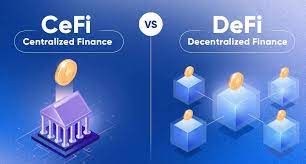Introduction to DeFi
DeFi, short for Decentralized Finance, is one of the most exciting innovations in the blockchain and cryptocurrency space. It represents a shift from traditional financial systems to peer-to-peer finance enabled by decentralized technologies built on the blockchain.
In this beginner-friendly guide, you’ll learn what DeFi is, how it works, and why it’s becoming a major force in the global financial ecosystem.
What is DeFi?
DeFi refers to a collection of financial applications and services that are built on blockchain networks—primarily Ethereum—and operate without centralized intermediaries like banks or brokers.
These decentralized apps (dApps) enable users to:
-
Lend and borrow crypto
-
Trade assets
-
Earn interest
-
Buy insurance
-
Save and invest funds
— all directly from their digital wallets.
Key Features of DeFi
1. Decentralization
There’s no central authority. Transactions are governed by smart contracts—self-executing code stored on the blockchain.
2. Transparency
All transactions are public and verifiable on the blockchain, ensuring accountability and trust.
3. Accessibility
Anyone with a smartphone and internet connection can access DeFi platforms, regardless of location or credit history.
4. Programmability
Smart contracts enable developers to build complex financial services with customizable rules.
How Does DeFi Work?
At its core, DeFi uses smart contracts to automate traditional financial processes. For example, when you lend your crypto on a DeFi platform like Aave or Compound, a smart contract handles the entire transaction: locking your funds, tracking interest, and returning your money.
Some core building blocks of DeFi include:
-
Stablecoins (e.g., USDT, DAI) to reduce price volatility.
-
Decentralized Exchanges (DEXs) like Uniswap and SushiSwap.
-
Lending Platforms like Aave and Compound.
-
Yield Farming and Staking platforms for passive income.
Real-World Use Cases
-
Global Remittances: Send funds across borders with lower fees and faster speed.
-
Savings and Interest: Earn higher yields than traditional banks.
-
Collateralized Loans: Borrow funds without a bank or credit score.
-
Decentralized Insurance: Buy and claim insurance via smart contracts.
Benefits of DeFi
-
No Middlemen: Reduced costs and faster processing.
-
Financial Inclusion: Open to anyone, anywhere.
-
Ownership and Control: Users have full control over their assets.
-
Innovation: Constant development of new financial products.
Risks and Challenges
1. Smart Contract Bugs
Bugs in code can be exploited by hackers.
2. Volatility
Crypto markets are highly volatile, affecting DeFi asset values.
3. Scams & Rug Pulls
Not all projects are legitimate. Always research before investing.
4. Regulatory Uncertainty
Governments are still figuring out how to regulate DeFi.
Popular DeFi Platforms You Should Know
| Platform | Function |
|---|---|
| Uniswap | Decentralized exchange |
| Aave | Lending and borrowing |
| Curve | Stablecoin trading |
| Yearn.Finance | Yield optimization |
| MakerDAO | Collateralized loans |
How to Get Started with DeFi
-
Create a Wallet: Use MetaMask or Trust Wallet.
-
Buy Crypto: Purchase ETH or stablecoins from an exchange.
-
Connect to a dApp: Access DeFi platforms via your wallet.
-
Start Small: Test the waters with a small investment.
Internal Links
Conclusion
DeFi is changing how the world thinks about money, investing, and financial freedom. With transparency, control, and global accessibility, it offers a revolutionary alternative to traditional banking. However, it’s essential to stay informed, cautious, and responsible when exploring DeFi platforms.




